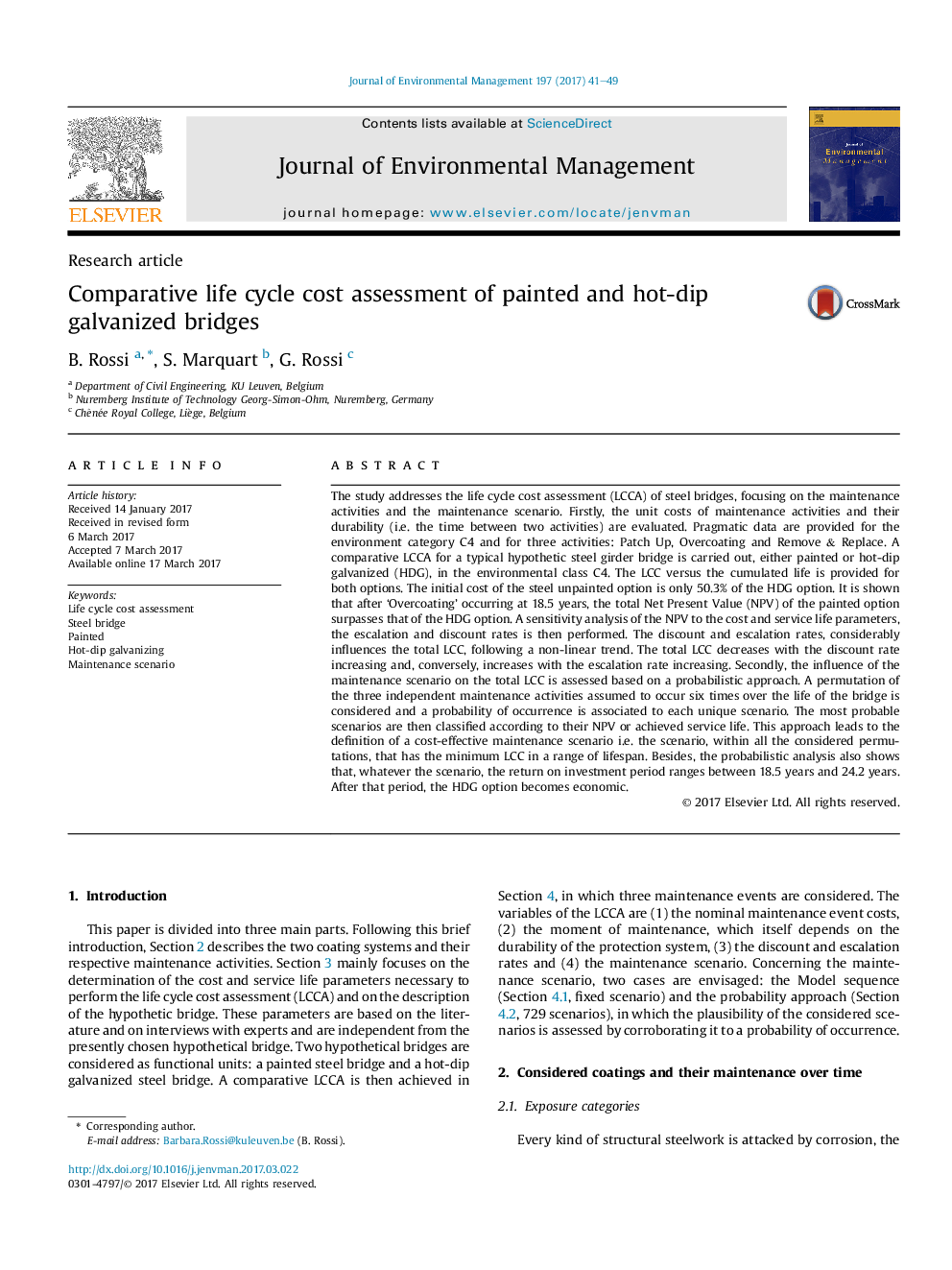| Article ID | Journal | Published Year | Pages | File Type |
|---|---|---|---|---|
| 5116930 | Journal of Environmental Management | 2017 | 9 Pages |
â¢It provides the cost of maintenance activities for the environment category C4 and for 3 maintenance events.â¢The durability of the maintenance activities is provided.â¢A life-cycle cost assessment is made for one hypothetic steel bridge, either painted or hot-dip galvanized.â¢A sensitivity analysis of the LCC to several chosen parameters (such as the scenario) is performed.
The study addresses the life cycle cost assessment (LCCA) of steel bridges, focusing on the maintenance activities and the maintenance scenario. Firstly, the unit costs of maintenance activities and their durability (i.e. the time between two activities) are evaluated. Pragmatic data are provided for the environment category C4 and for three activities: Patch Up, Overcoating and Remove & Replace. A comparative LCCA for a typical hypothetic steel girder bridge is carried out, either painted or hot-dip galvanized (HDG), in the environmental class C4. The LCC versus the cumulated life is provided for both options. The initial cost of the steel unpainted option is only 50.3% of the HDG option. It is shown that after 'Overcoating' occurring at 18.5 years, the total Net Present Value (NPV) of the painted option surpasses that of the HDG option. A sensitivity analysis of the NPV to the cost and service life parameters, the escalation and discount rates is then performed. The discount and escalation rates, considerably influences the total LCC, following a non-linear trend. The total LCC decreases with the discount rate increasing and, conversely, increases with the escalation rate increasing. Secondly, the influence of the maintenance scenario on the total LCC is assessed based on a probabilistic approach. A permutation of the three independent maintenance activities assumed to occur six times over the life of the bridge is considered and a probability of occurrence is associated to each unique scenario. The most probable scenarios are then classified according to their NPV or achieved service life. This approach leads to the definition of a cost-effective maintenance scenario i.e. the scenario, within all the considered permutations, that has the minimum LCC in a range of lifespan. Besides, the probabilistic analysis also shows that, whatever the scenario, the return on investment period ranges between 18.5 years and 24.2 years. After that period, the HDG option becomes economic.
